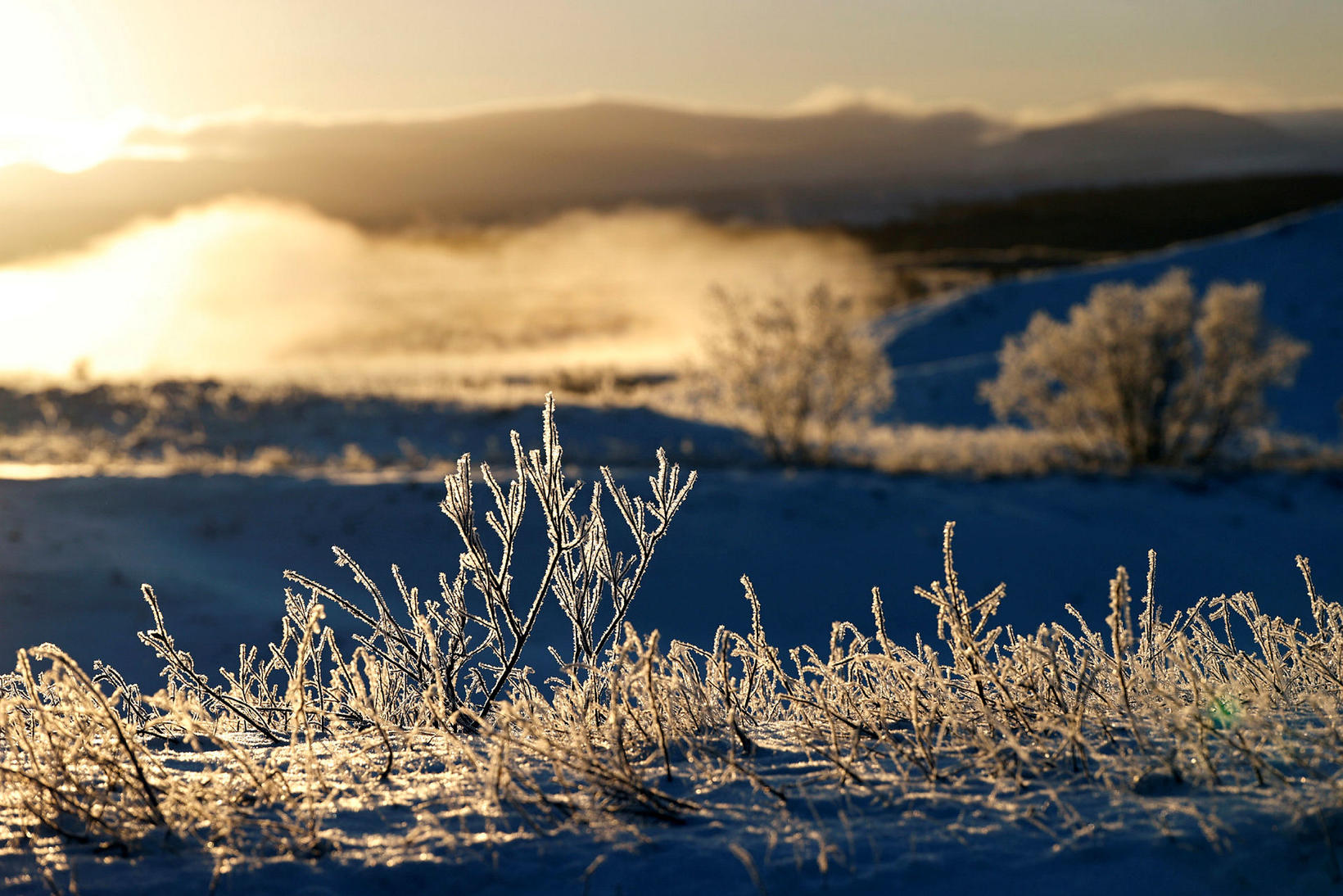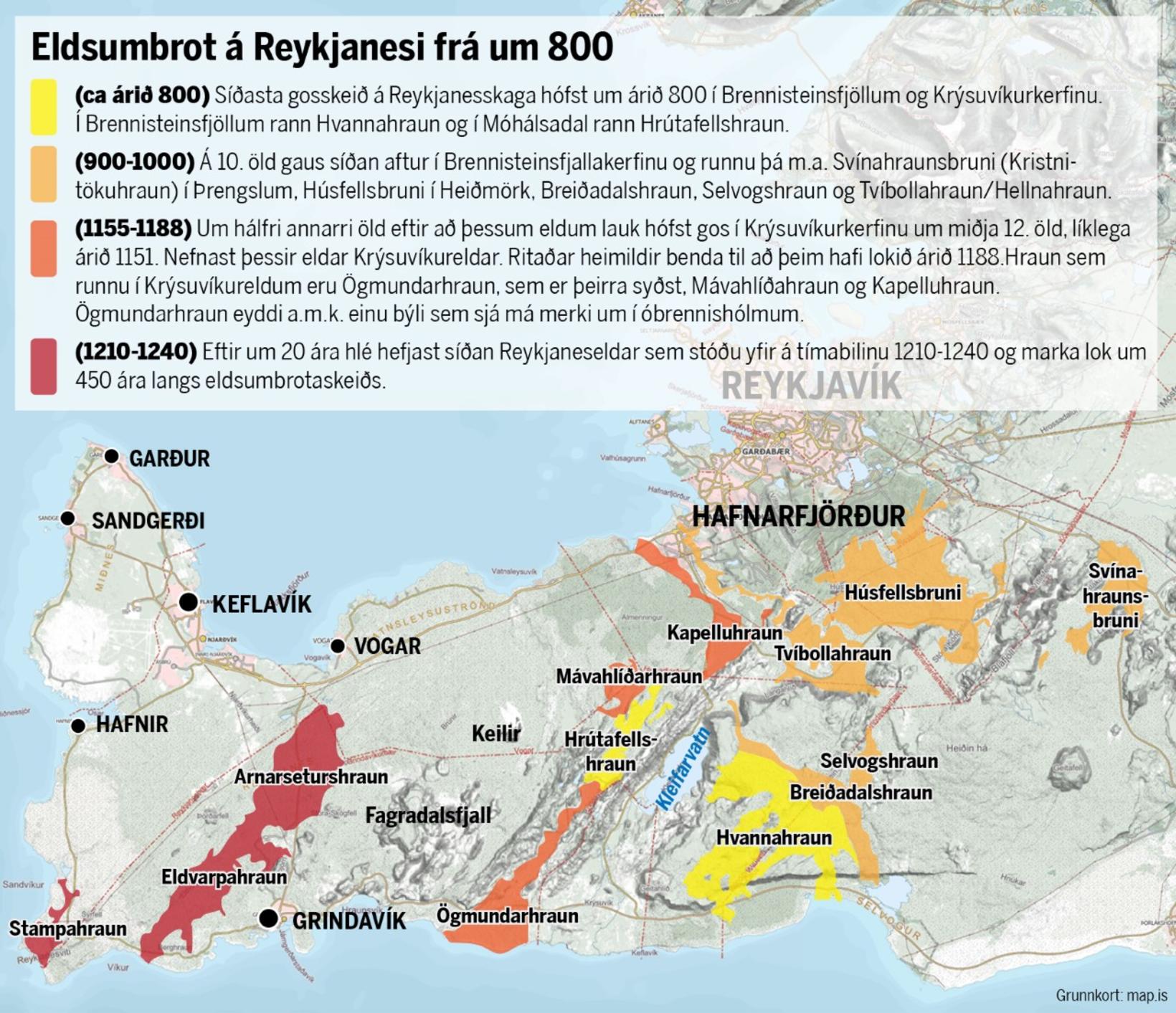Magma could be brewing under a lava field close to the capital
The icy cold has captured the fauna in Heiðmörk but a short distance away below the surface and at a considerable depth fires could be brewing after a thousand years' hiatus. mbl.is/Eggert Jóhannesson
The series of earthquakes, which began off southeast of Heiðmörk on Friday and increased in magnitude over the weekend, may indicate magma accumulation at a considerable depth.
Þorvaldur Þórðarson, professor of volcanology at the University of Iceland, says this in an interview with Morgunblaðið yesterday.
The news of the earthquake and its epicenter was covered by mbl.is this weekend. The earthquakes originated under the Húsfellsbruni, the nearest lava field to Reykjavík during the last eruption of the Reykjanes peninsula.
The system has started to prepare
“These may be tremors due to tension building at the bottom of the crust,” says Þórðarson.
“But they might also indicate an accumulation of magma underneath it, between the soft and the hard crust.”
Húsfellsbruni, like the current earthquakes, belongs to the Brennisteinsfjöll-system, one of several volcanic systems in the Reykjanes peninsula. Þórðarson said he doubts whether the earthquakes will lead to some kind of an eruption in the near future.
“But I think this is actually telling us that these systems are now in operation. And they are starting to prepare.”
Volcanic activity in Reykjanes peninsula from about the year 800
(Approx. 800) The last eruption era on the Reykjanes peninsula began around 800 in the Brennisteinsfjöll and Krýsuvík systems. Brennisteinsfjöll eruption produced Hvannarhraun lavafield and in Móhálsadalur eruption Hrútafellshraun lavafield was formed.
(900-1000) The Brennisteinsfjöll system erupted again and the lava flows included Svínshraun in Þrengsli, Húsafellsbruni in Heiðmörk, Breiðadalshraun, Selvogshraun and Tvíbollahraun/Hellnahraun lava fields.
(1155-1188) Around half a century after these eruptions ended, an eruption began in the Krýsuvík system in the mid 12th century, probably in 1151. These fires are called the Krýsuvík fires. Written sources indicate that they ended in 1188. Lava flowing in the Krýsuvík fires are Ögmundarhraun, which is the southernmost of them, Mávahlíðahraun and Kapelluhraun. Ögmundarhraun destroyed at least one farm.
(1210-1240) After about 20 years of intermission, the Reykjanes eruption begins, which lasted between 1210-1240 and marks the end of about 450 years of volcanic activity.



/frimg/1/38/77/1387784.jpg)





